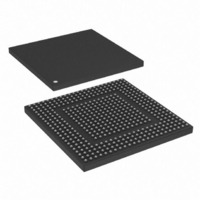MPC8308VMAGD Freescale Semiconductor, MPC8308VMAGD Datasheet - Page 245

MPC8308VMAGD
Manufacturer Part Number
MPC8308VMAGD
Description
MPU POWERQUICC II PRO 473MAPBGA
Manufacturer
Freescale Semiconductor
Datasheets
1.MPC8308VMAGD.pdf
(90 pages)
2.MPC8308VMAGD.pdf
(2 pages)
3.MPC8308VMAGD.pdf
(1170 pages)
4.MPC8308VMAGD.pdf
(14 pages)
Specifications of MPC8308VMAGD
Processor Type
MPC83xx PowerQUICC II Pro 32-Bit
Speed
400MHz
Voltage
1V
Mounting Type
Surface Mount
Package / Case
473-MAPBGA
Product
Network Processor
Data Rate
256 bps
Frequency
400 MHz
Supply Voltage (max)
3.6 V
Supply Voltage (min)
3 V
Supply Current (max)
5 uA
Maximum Operating Temperature
+ 105 C
Minimum Operating Temperature
0 C
Interface
I2C, JTAG, SPI
Mounting Style
SMD/SMT
Lead Free Status / RoHS Status
Lead free / RoHS Compliant
Features
-
Lead Free Status / Rohs Status
Lead free / RoHS Compliant
Available stocks
Company
Part Number
Manufacturer
Quantity
Price
Company:
Part Number:
MPC8308VMAGD
Manufacturer:
FREESCAL
Quantity:
300
Company:
Part Number:
MPC8308VMAGD
Manufacturer:
Freescale Semiconductor
Quantity:
10 000
Part Number:
MPC8308VMAGD
Manufacturer:
FREESCALE
Quantity:
20 000
Company:
Part Number:
MPC8308VMAGD400/266
Manufacturer:
FREESCAL
Quantity:
300
Company:
Part Number:
MPC8308VMAGDA
Manufacturer:
Freescale Semiconductor
Quantity:
10 000
- MPC8308VMAGD PDF datasheet
- MPC8308VMAGD PDF datasheet #2
- MPC8308VMAGD PDF datasheet #3
- MPC8308VMAGD PDF datasheet #4
- Current page: 245 of 1170
- Download datasheet (9Mb)
Software communication with the performance monitor is achieved through PMRs rather than SPRs. The
PMRs are used for enabling conditions that can trigger the performance monitor interrupt.
7.2
Table 7-1
(SVR) to the revision level marked on the device. These registers can be accessed as SPRs through the
e300 core (see
7.3
The PowerPC architecture consists of the following layers, and adherence to the PowerPC architecture can
be measured in terms of which of the following levels of the architecture is implemented:
The PowerPC architecture allows a wide range of designs for such features as cache and core interface
implementations.
Freescale Semiconductor
•
•
•
•
— The performance monitor counter registers (PMC0–PMC3) are 32-bit counters used to count
— The performance monitor global control register (PMGC0) controls the counting of
— The performance monitor local control registers (PMLCa0–PMLCa3) control each individual
The performance monitor interrupt is assigned to interrupt vector 0x0F00.
User instruction set architecture (UISA)
Defines the base user-level instruction set, user-level registers, data types, floating-point interrupt
model, memory models for a uniprocessor environment, and programming model for a
uniprocessor environment.
Virtual environment architecture (VEA)
Describes the memory model for a multiprocessor environment, defines cache control instructions,
and describes other aspects of virtual environments. Implementations that conform to the VEA also
adhere to the UISA but may not necessarily adhere to the OEA.
Operating environment architecture (OEA)
Defines the memory management model, supervisor-level registers, synchronization requirements,
and interrupt model. Implementations that conform to the OEA also adhere to the UISA and VEA.
PowerPC Architecture Implementation
e300 Processor and System Version Numbers
lists the revision codes in the processor version register (PVR) and the system version register
software-selectable events. Each counter counts up to 128 events. UPMC0–UPMC3 provide
user-level read access to these registers. They are identified in
performance monitor events. It takes priority over all other performance monitor control
registers. UPMGC0 provides user-level read access to PMGC0.
performance monitor counter. Each counter has a corresponding PMLCa register.
UPMLCa0–UPMLCa3 provide user-level read access to PMLCa0–PMLCa3).
Figure
MPC8308
Revision
A
7-2).
MPC8308 PowerQUICC II Pro Processor Reference Manual, Rev. 0
Table 7-1. Device Revision Level Cross-Reference
Processor Version
Register (PVR)
8085_0020
8101_0110
System Version
Reg
i
ster (SVR)
Table
7-2.
e300 Processor Core Overview
7-13
Related parts for MPC8308VMAGD
Image
Part Number
Description
Manufacturer
Datasheet
Request
R
Part Number:
Description:
Development Boards & Kits - Other Processors MPC8308-NSG
Manufacturer:
Freescale Semiconductor
Datasheet:

Part Number:
Description:
MCU, MPU & DSP Development Tools For MPC8308 Ethernet USB I2C SPI
Manufacturer:
Freescale Semiconductor
Datasheet:

Part Number:
Description:
MCU, MPU & DSP Development Tools For MPC8308 Ethernet USB 32bit
Manufacturer:
Freescale Semiconductor
Datasheet:
Part Number:
Description:
Mpc8308 Powerquicc Ii Pro Processor Hardware Specification
Manufacturer:
Freescale Semiconductor, Inc
Datasheet:

Part Number:
Description:
BOARD REF DESIGN MPC8308
Manufacturer:
Freescale Semiconductor
Datasheet:

Part Number:
Description:
MPC8308 PowerQUICC II Pro Processor Hardware Specification
Manufacturer:
FREESCALE [Freescale Semiconductor, Inc]
Datasheet:
Part Number:
Description:
Microprocessors - MPU E300 ext tmp Qual266
Manufacturer:
Freescale Semiconductor
Datasheet:
Part Number:
Description:
Microprocessors - MPU E300 ext tmp Qual333
Manufacturer:
Freescale Semiconductor
Datasheet:
Part Number:
Description:
Microprocessors - MPU E300 EXT TEMP PB 400
Manufacturer:
Freescale Semiconductor
Datasheet:
Part Number:
Description:
Microprocessors - MPU E300 MP Pb 266
Manufacturer:
Freescale Semiconductor
Datasheet:
Part Number:
Description:
Microprocessors - MPU E300 MP Pb 400
Manufacturer:
Freescale Semiconductor
Datasheet:
Part Number:
Description:
Microprocessors - MPU E300 MP Pb 333
Manufacturer:
Freescale Semiconductor
Datasheet:
Part Number:
Description:
Manufacturer:
Freescale Semiconductor, Inc
Datasheet:
Part Number:
Description:
Manufacturer:
Freescale Semiconductor, Inc
Datasheet:
Part Number:
Description:
Manufacturer:
Freescale Semiconductor, Inc
Datasheet:











